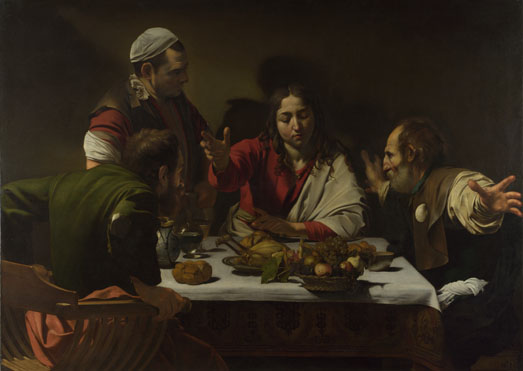Easter 2-C
April 7, 2013
Acts 5:27-32
Psalm 118:19-24
Revelation 1:4-8
John 20:19-31
John 20:19-31
Since we cannot see God, it is only human nature that we
should want some sort of sign that God exists and that God loves us. We want
some sort of proof, for the realities of human existence can be dismal and
anything we are only promised will be good must be touched, felt, tasted,
smelled -- somehow demonstrated to be real -- before we can believe in its
goodness.
Looking for that sign can make us kind of wacky. Do you know
the Monty Python movie, The Life of Brian – a bit of a spoof on a sometimes
desperate search for a savior, set in 1st century Palestine? The crowd has
somehow fixated on an ordinary person called Brian, and they begin chasing
Brian through the desert near Jerusalem. He is running to get away from them,
convinced he is no messiah. He loses a shoe but keeps running. “His shoe!” they
all cry, “A sign!” And they immediate take of their shoes and run with one bare
foot through the stony desert.
Or do you know this story, from the Middle Ages? During the
Plague, the Pope was saying mass to pray for relief for the Romans, and he had
a vision of an angel with a sword floating in the sky over the Castel
Sant’Angelo. He knew it was a sign from God that the plague would soon end. And
it did.
The Easter story is also about searching for signs – real signs
that the promise of Jesus' resurrection from the dead was indeed true. In the
Gospel of John alone there are four different ways the disciples come to
believe in the resurrection. "[John] comes to faith after having seen the
burial wrappings but without having seen Jesus himself. Magdalene sees Jesus
but does not recognize him until he calls her by name. The disciples see and
believe. Thomas also sees him and believes …” but only after he insists on
seeing those actual wounds.
One of the central controversies of the early church was
what to believe about the Risen Lord. People went to great extremes on both
sides of the argument to make their points: "Jesus was just a
vision," was countered with detailed and nearly gory accounts of his death
and rising. Late in the first century, around the time the gospels were
written, was the time when the eyewitnesses to the resurrection -- Mary, Peter,
Thomas and the rest -- were dying. How do John and the other evangelists
communicate this truth to the newer Christians -- the ones who were not around
to see the signs of the Risen Christ and yet do believe?
After Thomas sees the signs of death in Jesus hands and
believes in his resurrection, Jesus says, "Have you believed because you
have seen me? Blessed are those who have not seen and yet believe." In
saying this, Jesus in a sense turns away from the disciples around him (who
indeed have or will soon see the Risen Lord) and turns to address us.
Christians down through the ages, from the second generation of believers to us
here today have not seen the Risen Lord and yet we believe. In our just-the-facts-ma’am-please
world of the 21st century, it makes even less sense to say we believe in the
resurrection of the dead that it did for those people who lived in the first or
second centuries.
What died on the cross was the idea of a God who was also a
magical mystery worker. Because we have this story of Thomas putting his finger
through the hole in Jesus’ hand, we get the joke behind the story of the
one-shoed false messiah. As the English writer A.N. Wilson put it, these
stories of the resurrection provide us with no easy explanations or “fake consolations.”
He goes on to describe why it is so hard to be a Christian:
The new God was to be found not in control, but in loss of
control; not in strength but in weakness. He was no longer an explanation for
what happens. He was now a person – a mysterious person who only the minute
before had looked very much like the gardener sweeping the path. That has the
profoundest implications for the human race and for human history for as long
as it lasts. For we can no longer look to an imaginary God to hand out
morality, to feed the poor, to heal the sick, to refashion the world along just
and equitable lines. That is our responsibility now, and if it seems like a
Godless world, we shall be judged – we, not God.
The Twelve did not recognize the friend who had been killed,
brutally and savagely killed – they did not recognize him at first. But the one
who doubted most of all saw, with the eyes of hindsight, that his Lord and his
God was to be found not in the highest heavens and heaven of heavens but in a
wounded human body: in bleeding hands, and pierced feet, and wounded side. It
was in the presence of that abject vulnerability that Doubt was cast aside, and
Faith could say, My Lord and my God![1]
"I shall be there," Jesus says. That is how the gospel of John ends, with Jesus' assurance that his spirit will



No comments:
Post a Comment